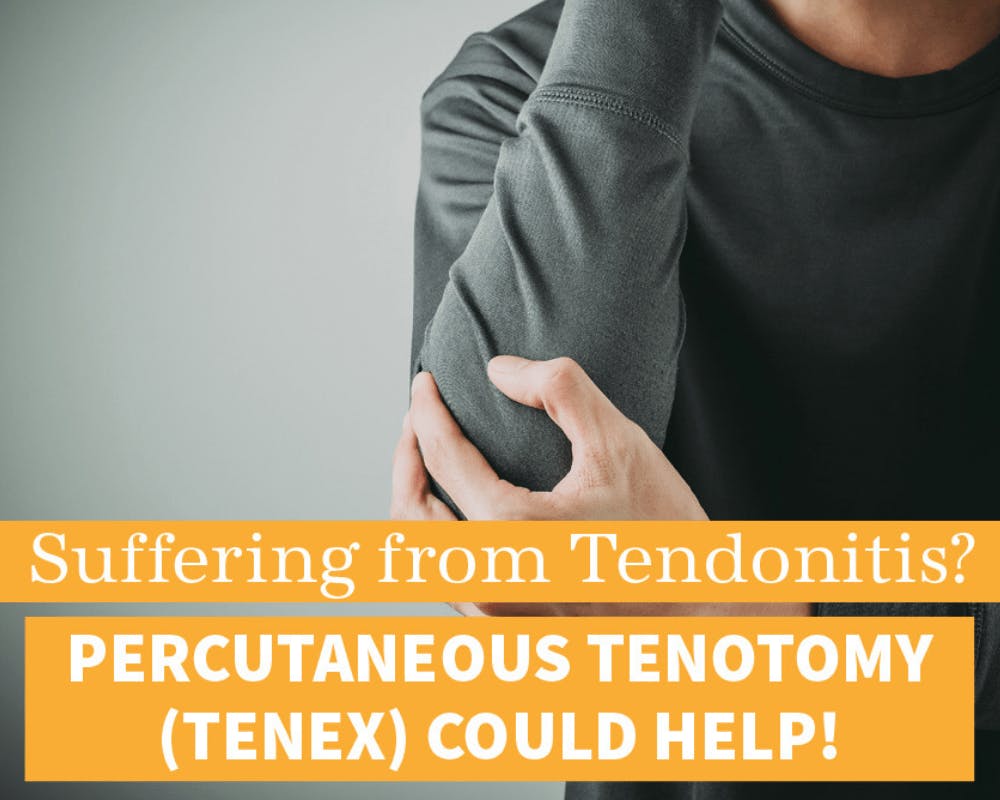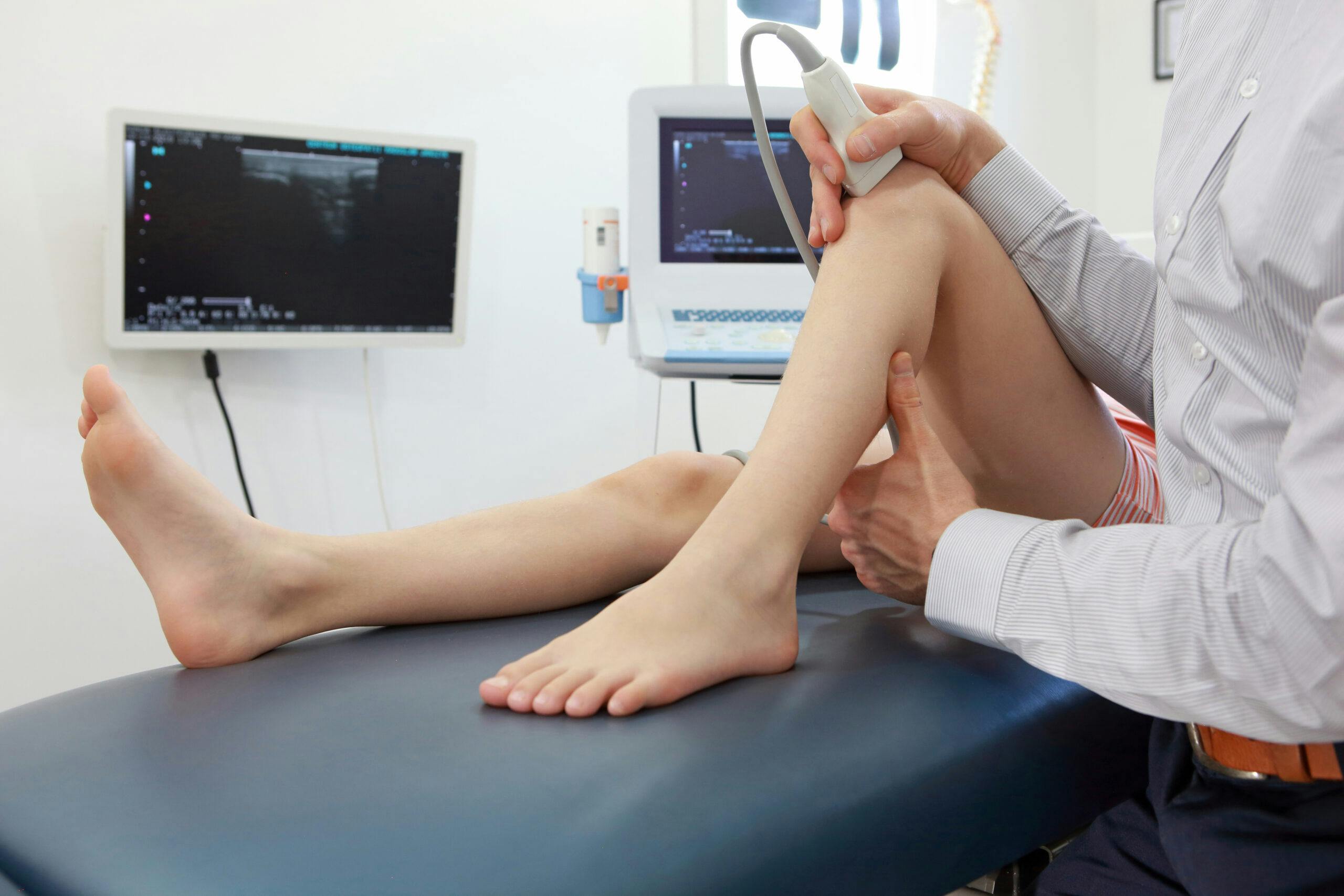- Blog
Treating Tendonitis TENEX
Posted on 12-12-2025 in Achilles Tendinitis & Minimally Invasive Surgery by Dr. Joshua Hackel

Posted on 12-12-2025 in Achilles Tendinitis & Minimally Invasive Surgery by Dr. Joshua Hackel
Treating Tendonitis with Percutaneous Tenotomy (TENEX)
Millions of people a year suffer from the pain, stiffness and inflammation caused by chronic tendonitis. Tendons are strong bands of connective tissue that serve as the attachment mechanism between muscles and bones. The fibrous collagen that makes up tendons can degenerate due to acute injury or overuse, ultimately leading to tendonitis, a painful, chronic condition. Over time, repetitive overuse of muscles and joints will cause microtears to develop in the tendons, ultimately leading to pain that can make performing the activities of daily living (ADLs), participating in casual or competitive athletics, and picking up heavy objects a challenge.
Traditional treatments for chronic tendon pain include rest, steroid shots, physical therapy, or, in extreme cases, surgery to repair the damaged tissue in the affected tendons. In recent years, percutaneous tenotomy (TENEX) has emerged as an innovative treatment option for patients experiencing this painful condition.
How does percutaneous tenotomy work?
Percutaneous tenotomy is a minimally invasive, ultrasound-guided procedure that is performed under local rather than general anesthesia. During the procedure, Dr. Hackel uses ultrasound imaging to locate the damaged tendon tissue causing pain. Once the damaged tissue is located, a small incision is made above the injury site so that a small, ultrasonic device can be placed near the tendon. This instrument emits ultrasonic frequency waves to break down and simultaneously remove the damaged tissue while leaving healthy tissue unharmed. Removing this necrotic tendon tissue allows the tendon to heal properly, bringing relief from the pain, swelling and inflammation of tendonitis. Furthermore, percutaneous tenotomy’s ability to leave the healthy tissue intact prevents unnecessary damage and reduces recovery time.
What can percutaneous tenotomy be used to treat?
Any condition that stems from damage to the tendons can be treated with percutaneous tenotomy. Some of the most common conditions Dr. Hackel treats with percutaneous tenotomy include:
What are the benefits?
Percutaneous tenotomy offers several advantages over traditional treatment modalities for tendinopathy (disorders of the tendon). First, it is a minimally invasive procedure, so it can be done in the outpatient setting using minimal levels of sedation and with very little, if any, narcotics during recovery. Second, because the procedure uses an incision less than one inch long, there is a lower likelihood of infection and other life-threatening surgical complications following the procedure. It leaves behind far less scarring, which many patients appreciate. Finally, the recovery time following percutaneous tenotomy is significantly shorter than recovery from traditional tendon repair procedures, allowing patients to return to work and life sooner!
If you are still experiencing chronic pain caused by tendon disorders and other treatments you have undergone have offered little relief, percutaneous tenotomy may be for you. Dr. Josh Hackel specializes in providing patients with non-surgical procedures for pain relief. His experience, caring demeanor and dedication to his patients make him one of the top sports medicine physicians in and around Gulf Breeze, Florida.
To learn more, watch Dr. Hackel’s TENEX Presentation given during the 2021 American Medical Society for Sports Medicine to learn more about the procedure.
Sources
https://hackelmd.com/treatments/tenex/
[TENEX Health TX Info — The Hughston Clinic](https://www.hughston.com/tenex-health-tx-info/)
[Tenex Health – Tenex Health](https://tenexhealth.com/)

September is Healthy Aging Month, an observance dedicated to promoting the positive aspects of growing older and encouraging proactive steps toward maintaining long-term health. In its 33rd year, Healthy Aging Month inspires adults of all ages to focus on lifestyle habits that support vitality, independence and overall well-being.

Musculoskeletal ultrasound imaging offers orthopaedic patients safe, painless, and real-time imaging, without any harmful ionizing radiation or the need for uncomfortable positioning. As the first sports medicine physician in the region to utilize ultrasound for diagnostic and therapeutic purposes, Dr. Josh Hackel’s commitment to innovation has improved the accessibility of care for his patients.

According to the American Academy of Orthopaedic Surgeons, approximately 2 million older Americans sustain fractures yearly due to weak bones. By 2025, that number is predicted to rise to 3 million fractures annually. At North Florida Bone & Joint Specialists, we recognize the importance of maintaining strong bones, particularly as you age. In honor of Healthy Aging Month, the following tips can help you maintain, and even improve, your bone strength: